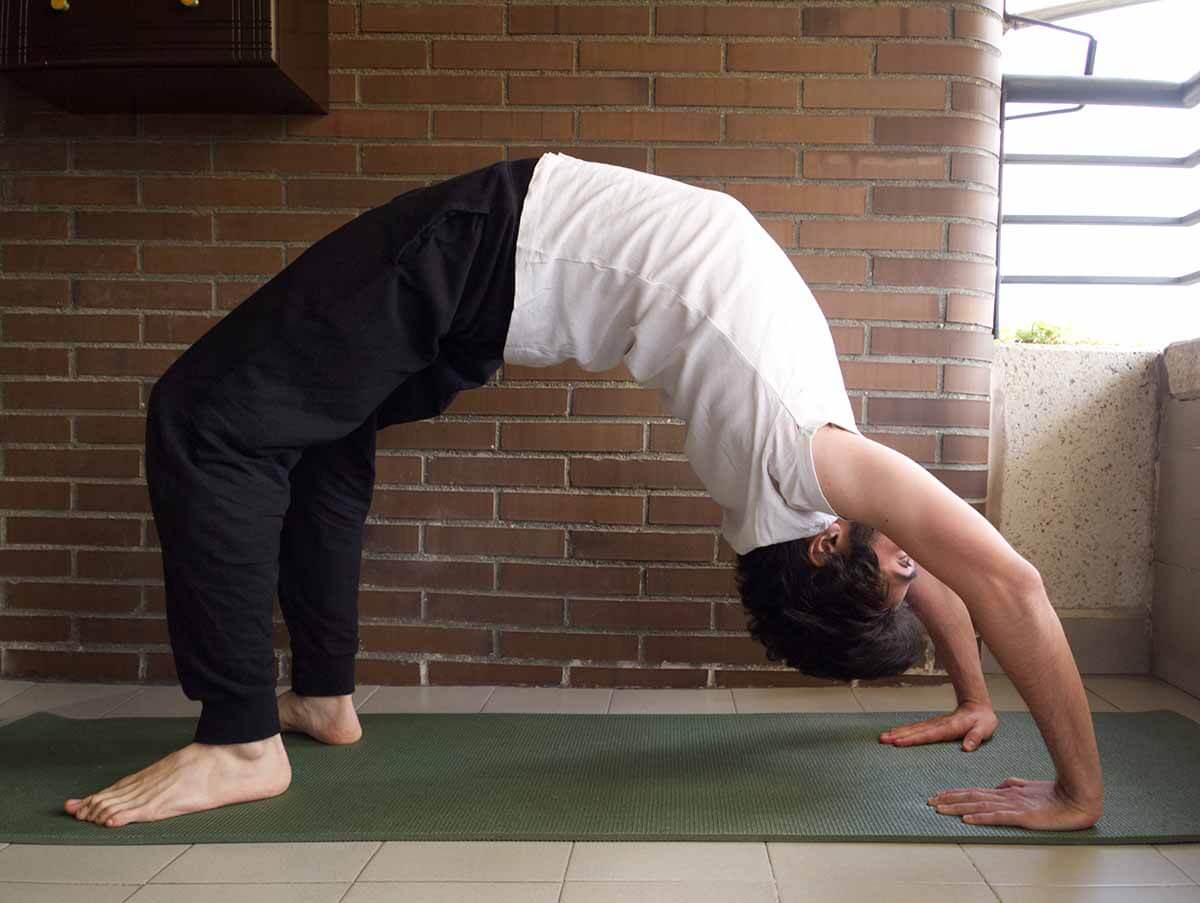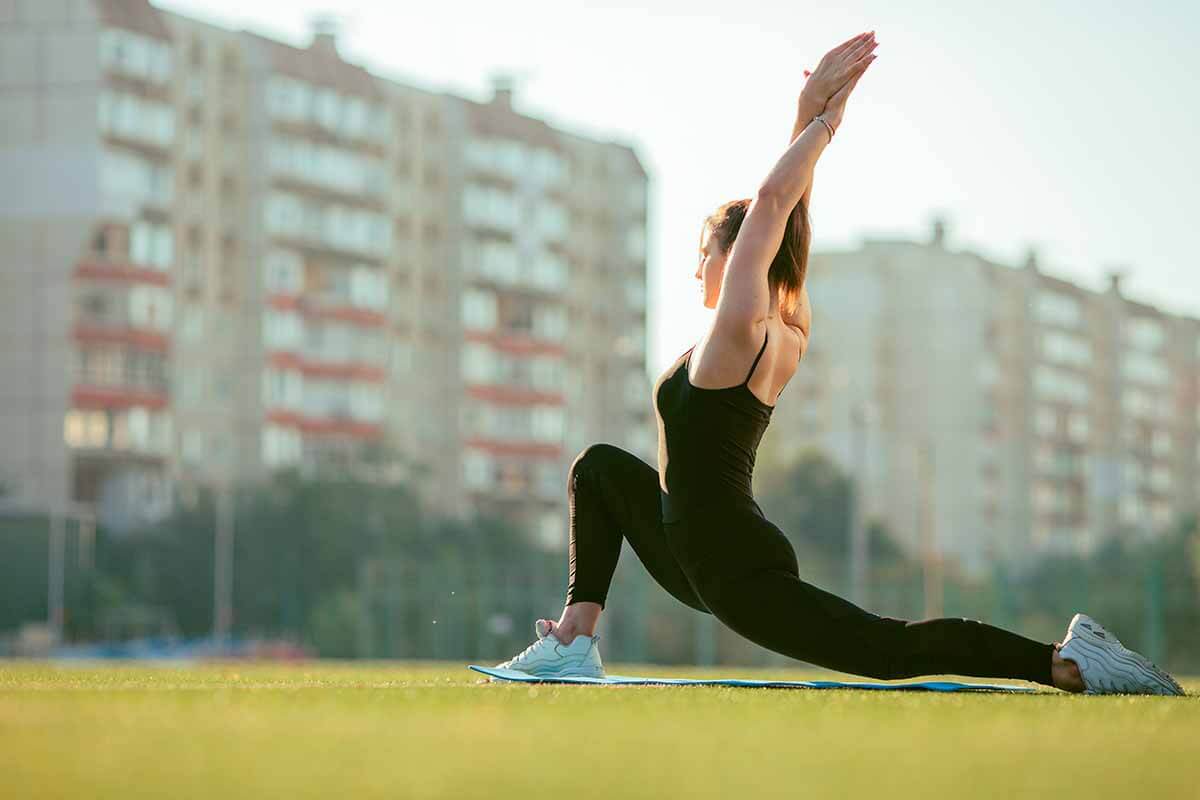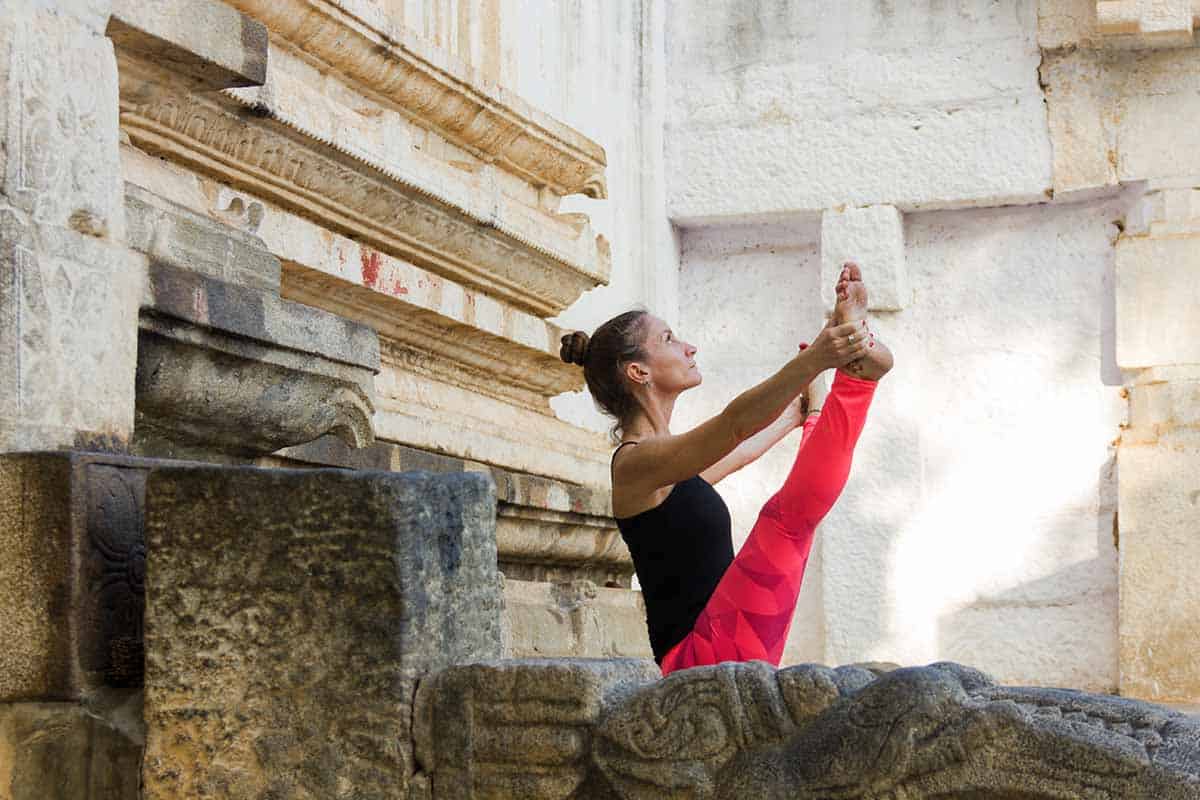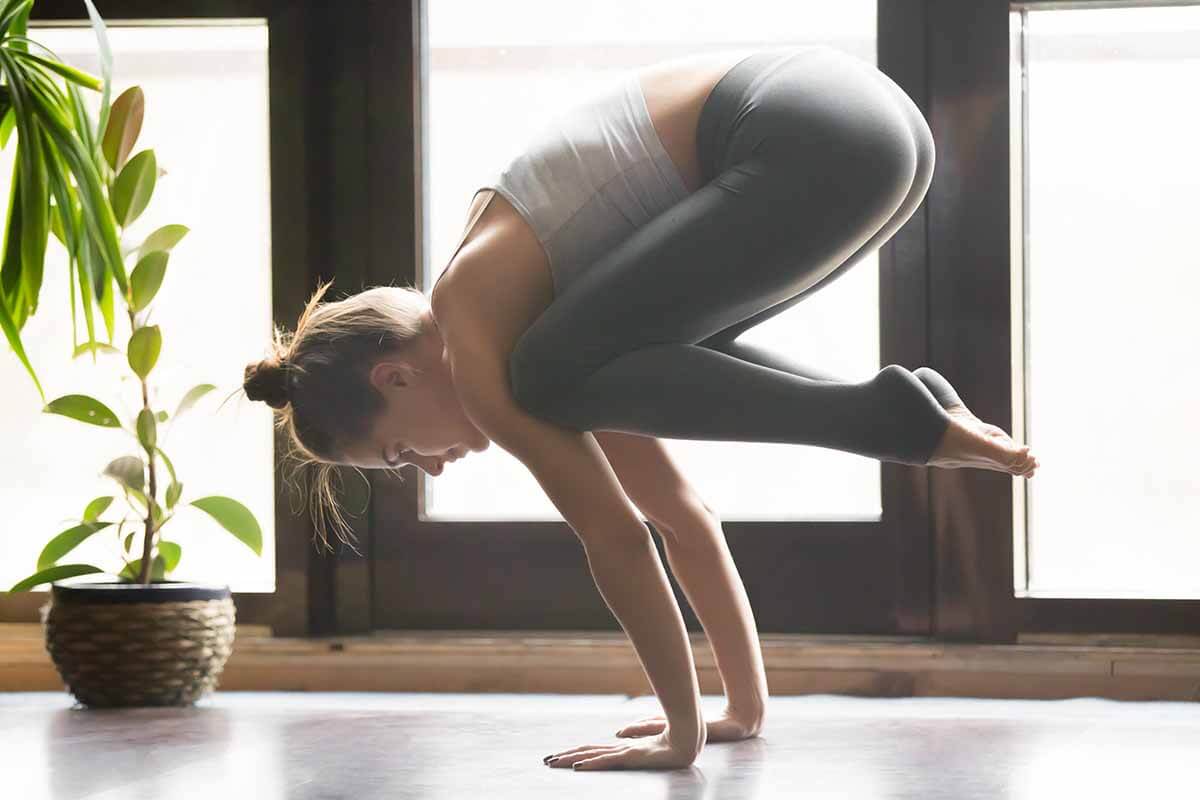
o, you’re ready to try arm balances! Or, maybe at a recent flow class the instructor snuck one of them in and you were having fun with it but realized a little at-home work would be needed before tackling it in the next session. Whatever the reason you landed here we’re ready to help you take off with Crow Pose.
There are many arm balances out there but Crow Pose is typically the one a yoga is introduced to first or at least tries before graduating into more complex poses. It’s also typically the first intermediate pose attempted as it requires a healthy combination of balance, strength and focus.
To fully get into a Crow pose, you must engage your abdominal muscles and ensure your legs are flexed. Doing this would mean that you’re not unnecessarily dumping all of your weight into your arms. You will need to practice to get into the pose fully. At first, you will try getting on both big toes and being content with that as you build your strength. Eventually, you can lift one foot off the ground and lift the other simultaneously. By building strength like this, you’ll finally get into the pose for a few seconds before you can’t hold it, and you’ll eventually hold the pose for quite a while. But to get from balancing on your big toes to entirely doing the Crow pose and having it for a long time, you’ll need a lot of practice.
Article Topics
What is Crow Pose?
Crow Pose in Yoga is an arm balance pose that is low to the ground yet requires a fair amount of strength and flexibility. It’s a playful pose that allows the yogi to begin exploring more complex movements in their practice.
What are the benefits of crow pose?
To name just a few, some of the benefits of crow pose are fusing together elements of a yogi’s practice such as balance, coordination, focus and strength. Crow Pose is on the entry level side of arm balancing posing but don’t underestimate it!
One of the other amazing benefits of Crow Pose is that it humbles you and gives you confidence at the same time. This may come in the form of your first arm balance flop. Don’t be discourages if this happens! Simply try again. 😉
Modifications of Crow Pose
One of the most common modifications is instead of pressing the knees into the arms you can instead hug your knees with your arms. It takes a bit more of a squeeze from shoulders and biceps into your knees but it allows for continued growth in your flexibility and strength until you can move into the traditional pose.
How do you get into Crow Pose?
Below are the steps of getting into Crow Pose from a Malasana Squat.
- With your knees already bent, place your palms on the floor shoulder distance apart. Make sure your fingers are spread and “gripping” the earth.
- Place a bend in your elbows and lift your hips slightly.Bend your knees slightly so that you can bring your palms flat on the floor, about shoulder distance apart.
- Place weight onto the balls of your feet and lift your knees into the back section of your upper arms one at a time keeping your toes on the ground.
- Make sure your gaze is forward and not down or looking underneath and back. This is critical for maintaining balance using the position of your head.
- One at a time bring your toes off of the ground and press the palms of your feet together. This movement should be slow and controlled.
- When you’re ready to come out of the posture, slowly lower your toes back onto the ground and reverse the steps above.
An Example of the Crow Pose
See the below pictures for an example of Crow Pose in the final Asana.
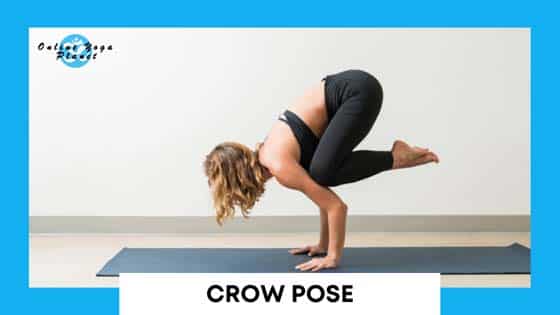
How do you train for Crow pose?
If you love doing yoga, you will know that arm balances require a lot of strength and stability, which isn’t hard to achieve if you’re consistent with your yoga practice. Even though yoga practice might seem effortless compared to other forms of exercise, it tends to tone up muscles and build strength and stability, hence the many yogi pictures in weird contorted poses. To practice the Crow pose, there are other yoga poses that you can practice, which will help build the strength and balance required to do the crow pose. These poses are:
- Cat pose is a great starter pose that will help you build-up to the crow pose. The similarity between these poses is that they both require you to round up your spine similarly. Mastering cat pose will help you quickly get into crow pose.
- Lizard pose helps in opening the hips and strengthening your adductors. You will need adductor strength to properly master the Crow pose or any other arm balance pose. Adductors are a group of muscles running down your inner thighs. Upon activating these muscle groups, they draw legs towards the midline.
- The Sleeping Eagle pose creates a rounded cat-like spine and helps strengthen the adductor muscles. Having both actions in your muscle memory will make it easier to practice the crow pose.
- Warrior III helps familiarize you with the idea of counterbalance. The same principles of counterbalance apply in Crow pose, and it will be best if you start to get familiar with them.
- Half boat helps strengthen those harder-to-reach lower belly muscles. To practice the Crow pose, you will need core strength and a rounded back the boat pose helps you practice.
- Four-Limbed Staff Pose, or as we commonly call it in yoga class, “Chaturanga Dandasana,” is a great pose to help strengthen your arms. Chaturanga can help you develop significant arm strength, which will help you master other complex arm balances other than the Crow pose.
- Reclining Crow Pose will help you practice crow pose in all its glory without engaging gravity. By practicing this pose on your back, you will be engaging all the muscles you need to strengthen without the challenge of resisting gravity.
Is Side Crow easier than Crow pose?
This question could confuse some people, especially if you’re already struggling with a regular Crow pose. When you google an image of Side Crow Pose, you can get a little intimidated and think, “there’s no way that can be easier.” Well, even though this may come as a shock to many, there are plenty of people who find Side Crow Pose to be a little easier than Crow Pose. Of course, the pose looks a bit more complicated than Crow Pose, but when it comes to doing it, it’s not.
A Side Crow can be easier for some people because the legs tend to slide down the arms, which is quite invigorating. But if you can do a Side Crow, that means you already have the upper body strength and balance you need to achieve the Crow pose. The side Crow pose tends to be a little more stable because both legs are tightly packed, and the arm position helps create natural support for the legs. So, if you’re able to achieve Side Crow and not Crow, it means that you already have the upper body strength and balance to do Crow pose, and you’ll need a little more practice to find what works best for you.
Final thoughts
Crow pose, just like all the other arm balance yoga poses, can be a little challenging. But with great patience and lots of practice, hopefully, you’ll enjoy the journey leading up to that time you achieve the Crow pose. Once you have arm and core strength, you’re just a few steps from doing the Crow pose. Now all you need is open hips and balance, which will result in a stunning Crow pose.

